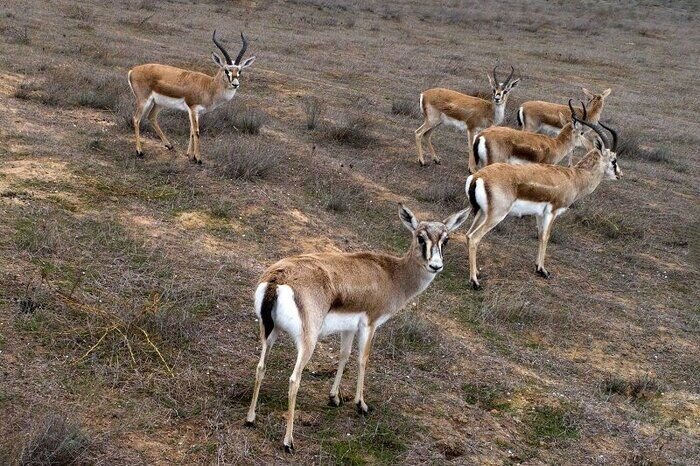Protected lands expand to 19.5m ha

TEHRAN – Five new protected areas, measuring 230,000 hectares, have been created across the country, expanding the protected areas to 19.5 million hectares.
The protected areas under the supervision of the Department of Environment (DOE) now account for 11.8 percent of the country’s lands, IRNA reported.
The history of Iran's first protected areas dates back to 1967 when the proposal for the establishment of two national parks and 15 protected areas as the first protected sites in Iran was approved.
In 1976, there were more than 65 protected areas covering an area of 6.7 million hectares in the country, which has now extended to more than 300 areas with an area of 19.5 million hectares.
The first new protected area with an area of about 63,000 hectares is located in Gavkhoni Wetland with the aim of preventing any change in land use and protecting the vegetation as well as safeguarding the wetland and birds that are present at special times when the wetland is filled with water.
The second site with an area of about 11,000 hectares is Kalate and Tang-e Sorkh located in Fars province. The goal is to preserve the diverse vegetation and pristine wildlife there. It is one of the prohibited hunting zones.
Padena, measuring 30,000 hectares area in the city of Semirom in Isfahan province, is the third added area.
It can enhance the protection of the Dena National Park conservation, which is one of the most important protected areas in Zagros since wildlife moves between these two regions.
With good vegetation and abundant water sources, wildlife can be easily revived. This area was one of the free zones before.
The next area is located in the Kalate desert, covering about 126,000 hectares in the east of Isfahan around Khur and Biabanak. It is home to valuable species such as rams, ewes, gazellas, and Bustards.
The last area, about 200 hectares, is a national natural monument called ‘Sheikh Mohammadlu’ in Ardabil province. It contains a collection of fossil trees dating back to prehistoric geological periods.
Protected areas rise 5.5 times
The number of protected areas under the supervision of the Department of Environment has increased 5.5 times after the 1979 Islamic Revolution.
Before the Revolution, there were a total of 58 protected areas in the country, Alireza Najimi, an official with the DOE said.
The number of protected areas has increased to 309 after the Islamic Revolution, ISNA quoted Najimi as saying.
In terms of area, the protected sites have expanded from 6.335 million hectares to 18.963 million hectares, he added.
In September 2023, Hasan Akbari, the DOE director for natural environment and biodiversity, said that during the last two years, the number of protected areas under a comprehensive management plan has increased, indicating a growth of 18 percent.
"The comprehensive plan studies the condition of wildlife, vegetation, water, and soil. Based on that, the land is classified into several zones," IRNA quoted Akbari as saying.
In these zones, parts of the area are considered only for protection, parts for recreation and nature tourism, and small parts for administrative activities, he explained.
“In fact, zoning and management are done based on specific conditions and the use of land."
A series of restrictions are imposed on these zones. For example, road construction or mining are banned. These limitations will ultimately lead to better management and preservation of the region, Akbari concluded.
MT/ MG
